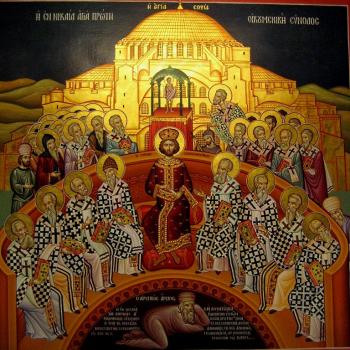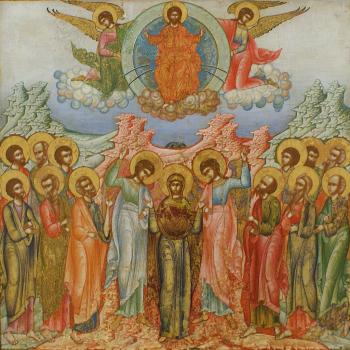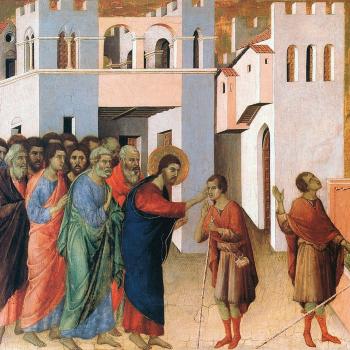
With the revelation of God given to us at the cross, we are shown how God works for us in ways which goes beyond our expectations. His economic activity with us, and the whole world, overcomes the self-made glory of those who think themselves greater than all by lifting up and promoting the cause of those who have been humiliated and destroyed by the power of sin. God, as the God of the oppressed, not only joins himself in solidarity with the oppressed, but he becomes one of them as he allowed himself to be taken to the cross and humiliated by the powers that be.
The cross once represented the capacity of the rich and powerful to destroy their enemies. Once, the cross was a sign of the power over life and death, lifting up the powerful as they crucified their foes, trampling upon their human dignity. The cross was a weapon, and many lives were destroyed by it by those who unjustly wielded the power of death as a way to dominate and control others. For a long time, the cross was a bitter sign, and those who looked upon it and saw it often had reasons to fear it as the cross represented the ultimate form of human depravity in the world. Those who were willing to use it as a means of execution showed they were willing to do anything to make their point.
God, as a God of surprises, did the unexpected. Not only did he become one of us, he allowed humanity to do whatever it wanted with him, so that the full power (and weakness) of sin can be demonstrated. Sin points to death and its greatest power is the power to destroy. Humanity, through sin, had become his enemy, and it wielded the cross as the vessel of its wrath against God, but God allowed humanity to do this so that he could reconcile us with him; “The God of peace, who through the cross has reconciled to himself us who through sin became his enemies…”[1] The cross was, in a way, God’s trojan horse. He allowed himself to be taken in and beaten and humiliated all the way to death and hell; it was his vehicle by which he could take on death unto himself so that he can penetrate death from within and transform it so that it no longer had to lead us further away from God. Death does not lead to utter destruction, rather, it leads us to the author of live, who has taken on the dead and given them all a share of his life, brining them with him into the joy of the resurrection. The cross has been transformed, so what was one a sign of the power of sin to destroy now becomes a sign of the end of sin and the greater power of life.
The cross now has been taken on as a sign of victory instead of defeat. God has reversed its implications because he uses it as the means by which he restores all things. Indeed, it becomes so connected to the victory that it is often joined with and associated with Christ himself, as Evdokimov described:
On the other hand, many images, for example the baptistery mosaic by Henchir Messouada, identifies Christ and the Cross. The same symbolism is found in so-called “living” crosses. The ends of the Cross are covered with palm branches, and the very ends are human arms: one opens the gate of heaven and the other breaks down the gates of hell. At the Exaltation of the Cross, we hear, “The tree of life planted in Golgotha (identification of the tree of the Garden of Eden and the Cross) is raised at the center of the earth …. and sanctifies the ends of the earth,” “the length and breadth of the Cross stretches out as far as the heavens.”[2]
The cross breaks over the gates of hell and leads us all to heaven; through it, Jesus has brought his deifying grace to all the world. In this way, though once the cross symbolized the depravity sin has caused over the world, now it is a symbol of power, the power of life, the power of love, over sin and death. God has reversed the way we understand the symbol.
God has taken upon himself the concerns of the poor and oppressed and now lifts them up by the cross. They are loved by him. Those who embrace the power of death will come face to face with Christ in those they seek to destroy, and they will see that, no matter what they do, the power of Christ within their victims is greater than the death which they wield. The early Christian martyrs often demonstrated this in their fearless actions as they embraced their death with joviality instead of fear and trembling. How could they not do so when the found God was with them? They knew of the resurrection and glory which is found beyond death. The cross, instead of being the power of earthly authorities and their self-glorification, now becomes the source of God’s saving power to the world; but to those who will not listen to God, to those who will ignore God’s calls for justice, the sign of the cross will remain a warning of their potential doom. “For the word of the cross is folly to those who are perishing, but to us who are being saved it is the power of God” (1Cor. 1:18 RSV).
Who would have thought that the very power behind the execution of Jesus Christ, the power of Rome represented in Pilate, would likewise be the power behind the elevation of the cross as a sign of life? Yet, that is what happened in history. St. Helen, the mother of St. Constantine, sought after and found the cross. Rome, once a great earthly power which fought against Christ and the church, destroying the lives of countless innocents, found itself humbled by the crucified one. Christ was victorious, not by any earthly conquest, not by soldiers invading and taking over Rome, but by the spiritual power released by the cross. Christ was victorious, not by seeking the destruction of his enemies, but by making them his friends. Once humbled, they could take their place with the lowly and be raised with Christ.
The cross is now the sign of victory of life over death, of God over the power of sin. It is to be lifted up, not to indicate any desire to destroy, but as a sign of the kingdom of heaven. It has become, as it were, God’s trophy of his victory over death. “We honour and reverence the symbols of His sufferings, especially the Cross, as divine trophies of victory over our common enemy.”[3] When we see it, we should realize the extent that God went to show his love for us, his love for all, his desire for all to have a share of eternal life. God has reversed the expectations of the world. The cross is at the center of his work. It was once a dark and deadly power, representing the worst of human instincts, but through Christ, it has been transformed, showing once and for all that Christ is able to embrace all things and change them for the better. The cross is the sign of God’s ultimate victory, a victory which takes place at the very depth of human depravity and sin so that everything can partake of his restorative grace, finding a place for itself in the kingdom of God.
[1] St. Gregory of Nazianzus, “Oration 11” in Select Orations. Trans. Martha Vinson (Washington, DC: CUA Press, 2003), 35.
[2] Paul Evdokimov, The Art of the Icon: A Theology of Beauty. Trans. Steven Bigham (Redondo Beach, CA: Oakwood Publications, 1990; repr. 1996), 141.
[3] St. Gregory Palamas, “On Faith” in Saint Gregory Palamas: The Homilies. trans. Christopher Veniamin and the Monastery of St. John the Baptist Essex, England (Waymart, PA: Mount Thabor Publishing, 2009), 57.
Stay in touch! Like A Little Bit of Nothing on Facebook.
If you liked what you read, please consider sharing it with your friends and family!













